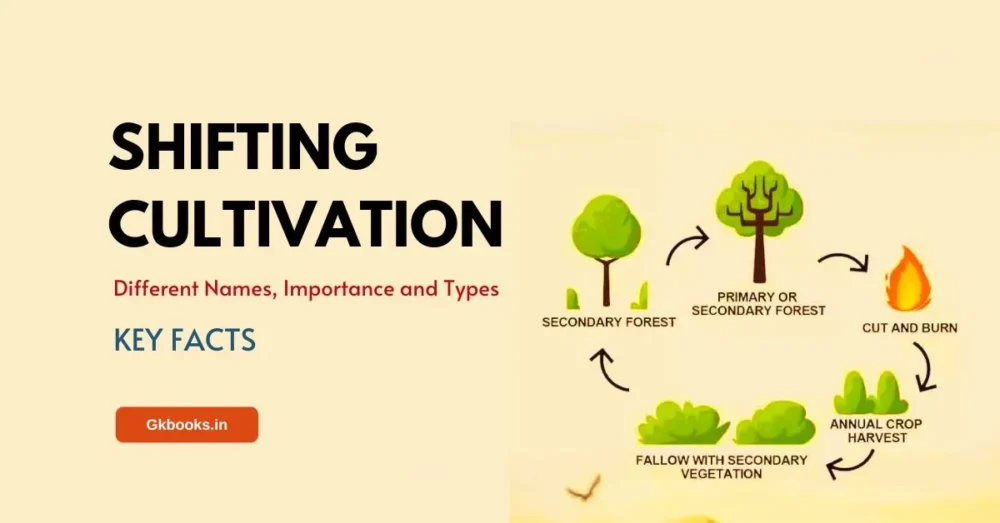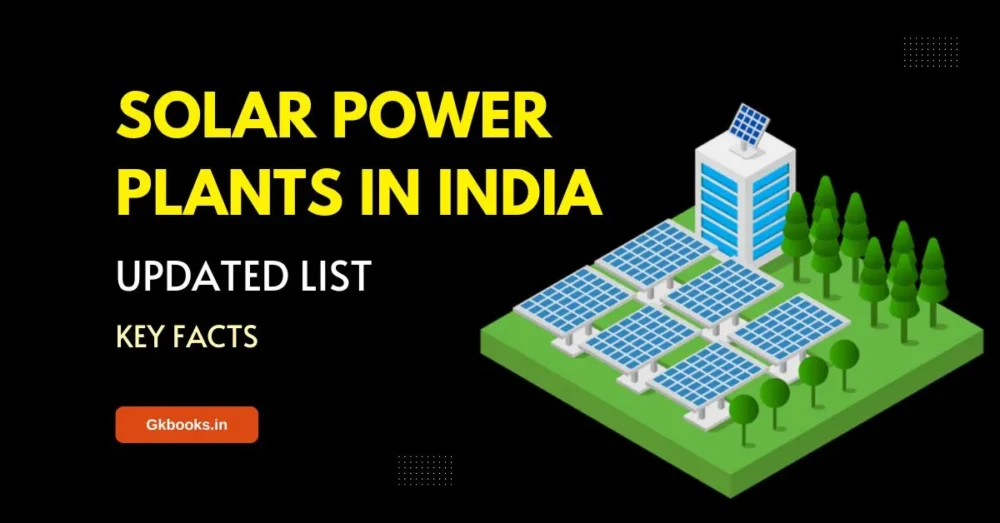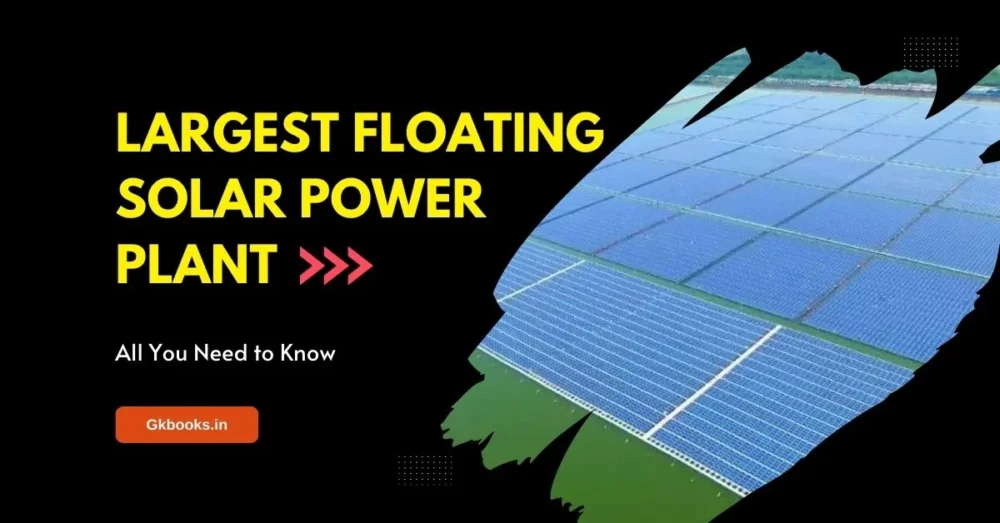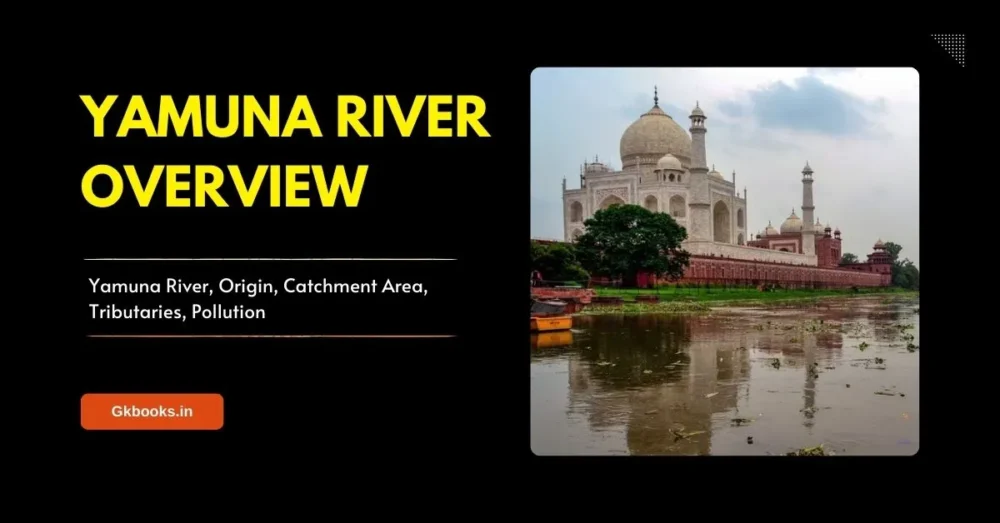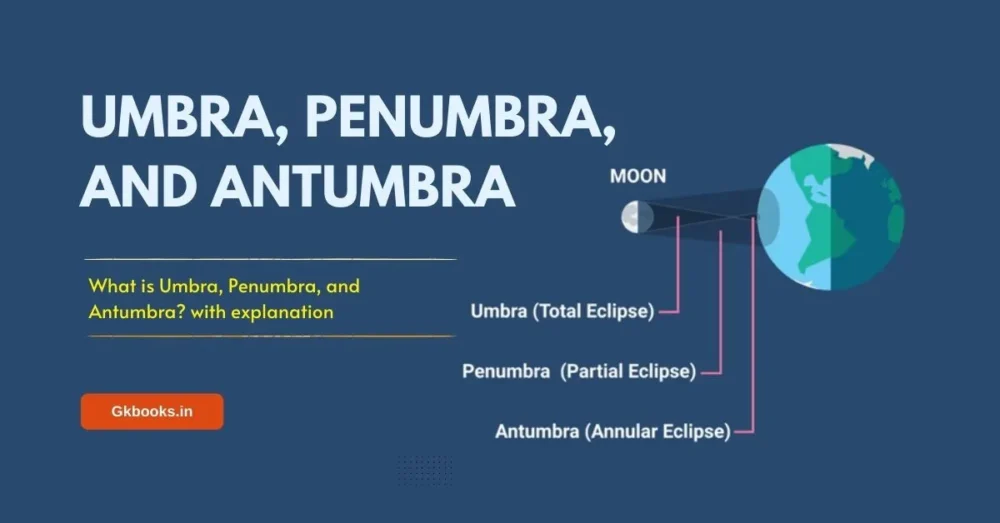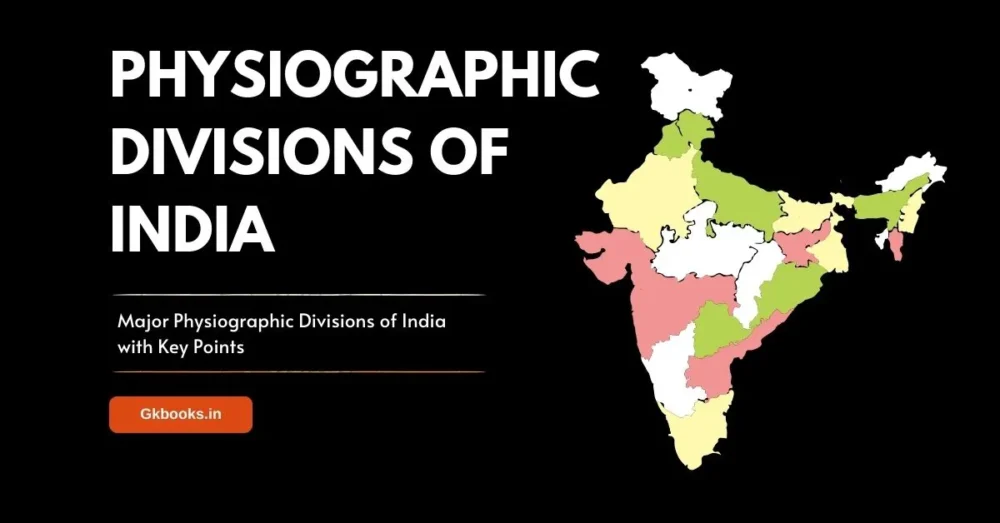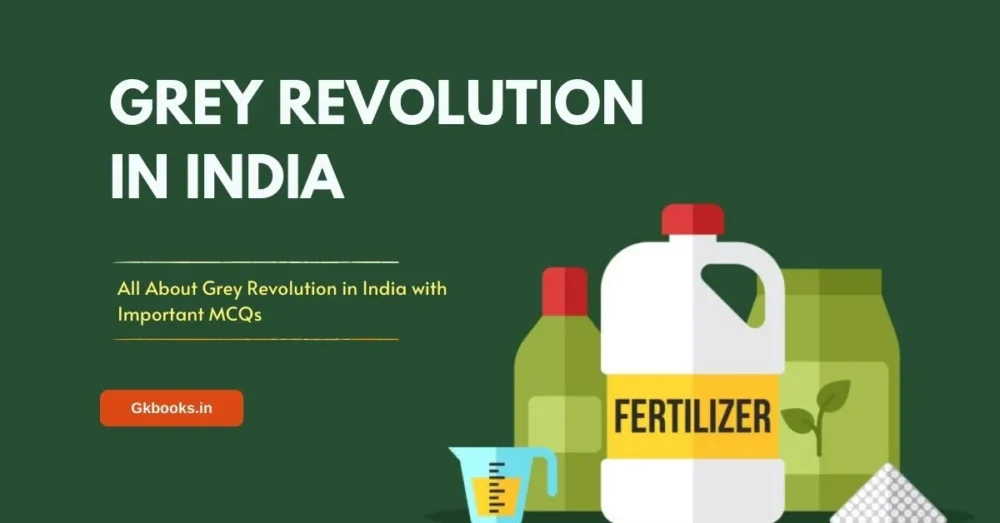Dear Aspirant, Download the Different Types of Soil in India PDF with States, Maps, and Previous Year Questions from the link at the end of this comprehensive post about the Different Types of Soil found in India.
The study of soils in India is an essential component of Indian geography, and questions related to this topic are frequently asked in various competitive exams such as SSC, RAIL, State PSC, CDS, and UPSC. In this blog post, we will provide a comprehensive overview of the different soil types in India, including their characteristics, distribution, and agricultural significance, as well as PDFs with maps and questions from the previous year.
Introduction
▪ Soil can be defined as the mixture of organic matter or humus, minerals, gases, liquids, and microorganisms that together support life.
▪ Soil is also commonly referred to as the top layer of the earth’s crust which supports life.
▪ This top layer or the earth’s outermost layer composed of soil is called Pedosphere. The word ‘pedon‘ is a Greek word that means “ground” or “earth.
▪ The Pedosphere interfaces with the lithosphere, the hydrosphere, the atmosphere, and the biosphere.
Soil has four major functions.
- It provides a medium for plant growth.
- As a means of water storage, supply, and purification
- As a modifier of Earth’s atmosphere
- As a habitat for organisms
What is Soil?
▪ Soil is the loose material or top layer of mantle rock known as regolith, which consists primarily of small particles and humus that can support plant growth. It is composed of mineral and rock particles, decomposed organic matter, air, soil water, and living organisms. The formation of soil is influenced by various factors, including parent material, relief, climate, vegetation, life forms, and time.
▪ Generally, the soil is composed of four main elements:
- Inorganic or mineral fractions derived from parent material
- Organic matter from decayed plants and animals
- Air
- Water
▪ Soil formation, also known as “pedogenesis,” occurs under specific natural conditions, with each element of the natural environment contributing to the process.
Biotic and Abiotic Factors of Soil
▪ Soil is an important factor in our ecosystem, and it contains both biotic and abiotic factors.
Biotic factors
▪ Biotic factors include living things like various organisms, insects, plants, and animals.
Abiotic factor
▪ Abiotic factors include non-living things like minerals, water, and air.
▪ Silicate minerals are the most common minerals found in the earth’s crusts. The most abundant silicates are feldspars.
▪ Soil provides essential metals for plant growth like Nitrogen, Potassium, and Phosphorus and less common minerals like Calcium, Magnesium, and Sulfur.
What are the Compositions of Soil?
▪ Soil is made up of five main components. It includes__
1. Mineral matter is obtained by the disintegration and decomposition of rocks by pressure and temperature.
2. The decay of plant residues obtains organic matter, animal remains, and microbial tissues.
3. Water, obtained from the atmosphere and the reactions in soil (chemical, physical and microbial)
4. Air or gas, from the atmosphere, reactions of roots, microbes, and chemicals in the soil.
5. Organisms like insects, worms, and Micro-organisms like Small microbes.
Soil Profile / Horizons
What is a Soil Profile?
▪ The soil profile is a vertical section of the soil that consists of layers arranged parallel to the surface. Each layer is called a horizon and has a different texture.
▪ Horizon A (Top Soil): The topmost layer of the soil profile, known as Horizon A or Topsoil, is where the organic matter gets mixed with mineral matter, nutrients, and water, making it the most suitable layer for plant growth. This layer contains the highest concentration of organic matter, nutrients, and microorganisms that are essential for plant growth.
▪ Horizon B (Sub Soil): Horizon B Subsoil, lies beneath Horizon A and contains more minerals but less organic matter or humus. It is usually harder and denser than Horizon A. It acts as a transition between Horizons A and C and includes material from above and below.
▪ Horizon C (Parent Material): This is the lowest layer in the soil profile and is made up of unconsolidated, partially weathered, or weathered and decomposed rock. It is the first stage in the soil formation process and serves as the source of the mineral and nutrient content of the upper layers, which are formed through the process of weathering.

▪ In some soils, additional horizons can be present, such as Horizon R (Rock) and Horizon O (Organic), depending on the specific characteristics of the soil profile.
▪ Soil horizons play a vital role in the development and sustainability of ecosystems, as they determine the properties of the soil, which in turn influence the types of plants and animals that can thrive in that ecosystem.
Classification of Soil
▪ In ancient times based on fertility soil was classified into two main groups, which include
- Urvara — Fertile soil
- Usara — Sterile (Infertile soil)
▪ Based on texture, soil can be classified into 4 groups
- Sandy
- Clayey
- Silty
- Loam
▪ On the basis of color, soil can be divided into 3 categories
- Red
- Yellow
- Black
Types of soil in India as per Indian standard
▪ In the year 1953, The Indian Council of Agricultural Research (ICAR) set up an All India Soil Survey Committee. According to the committee’s survey report, the ICAR has classified Indian soil into eight major groups based on their nature, genesis, color, composition, and location.
Different Types of Soil in India as per ICAR
▪ List of the 8 major soil groups notified by ICAR (Indian Council of Agricultural Research)
- Alluvial soils
- Black soils
- Red soils
- Laterite soils
- Forest and Mountain soils
- Arid and Desert soils
- Saline and Alkaline soils
- Marshy and Peaty soils
▪ About ICAR (Indian Council of Agricultural Research) • Director - Trilochan Mohapatra • Location - New Delhi, Delhi, India
Different Types of Soil in India with States
Alluvial Soil of India
✅ General Features
▪ Alluvial or Alluviam soil is the most abundant soil in India.
▪ It supports uninterrupted crop growth.
▪ Distributed over an area of 15 lakh sq. Km.
▪ Area covered In terms of Percentage – 45.6%.
▪ Transported and deposited through rivers and streams
▪ Soils range in nature from sandy loam to clay.
▪ The sand content decreases from the west to the east.
▪ The color of the alluvial soils varies from mild gray to ash gray.
▪ Shades depend on the depth of the deposition.
▪ The Alluvial soils are yet Immature.
▪ Alluvial soil located near the foothills of Shiwalik known as – Bhabar
▪ The Alluvia soil is the most productive soil in India because it supports wide plant growth.
✅ Location
▪ Northern plains (Mainly Indo-Gangetic Plain).
▪ Punjab in the west, West Bengal, and Assam.
▪ River valleys and deltas of the Mahanadi, Godavari, Krishna, and Cauvery.
✅ Composition
▪ Potash, Phosphoric Acid (Rich)
▪ Nitrogen (Poor)
▪ Iron Oxide and Lime vary within a wide range.
◘ Two Types of Alluvial soil
✅ Khadar
▪ New alluvium
▪ Deposited by floods annually
▪ Formed by depositing fine silts.
✅ Bhangar
▪ Represents a system of older alluvium,
▪ Deposited away from the floodplains.
**Both the Khadar and Bhangar soils incorporate calcareous concretions (Kankars).
**These soils are more loamy and clayey in the lower and central Gangetic Plain and the Brahmaputra Valley.
Note:-
• Alluvial Soil located in the coastal area known as - Coastal Alluvium
• And Alluvial Soil located in the delta region of various rivers known as - Deltic Alluvium
✅ Suitable Crops
▪ Rice, Wheat, Sugarcane, Maize, Pulses, Oilseeds, Fruits and Vegetables, and Leguminous Crops.
Key Difference Between Bangar and Khadar
| Characteristic | Bangar Soil | Khadar Soil |
|---|---|---|
| Location | Higher terraces of river valleys | Low-lying areas near riverbanks |
| Formation | Older, formed over a longer time | Younger, formed by annual flooding |
| Proximity to Rivers | Further from the river | Closer to the riverbanks |
| Fertility | Lower fertility due to aging | Higher fertility due to fresh silt and nutrients from flooding |
| Soil Texture | Coarser and less fine | Finer and more silty |
| Depth | Deeper soil layers | Shallower soil layers |
| Drainage | Better drainage | Poorer drainage |
Black Soil of India
✅ General Features
▪ Known as ‘Regur Soil’ or ‘Black Cotton Soil.
▪ Highly retentive of moisture.
▪ They swell and become sticky when wet and shrink when dried.
▪ During the dry season, these soils develop wide cracks.
▪ Also called self-plowed soil.
▪ Due to its individual gradual absorption and loss of moisture, black soil retains moisture for a very long time.
▪ Important for rain-fed crops, to sustain even during the dry season.
▪ The coloration of the soil levels from deep black to gray.
▪ The percentage of Back soil in India is 18.5%.
✅ Area covered
▪ Covers most of the Deccan Plateau.
▪ Maharashtra
▪ Madhya Pradesh
▪ Gujarat
▪ Andhra Pradesh
▪ Some parts of Tamil Nadu.
▪ Upper reaches of the Godavari and the Krishna
✅ Composition
▪ Rich in – Lime, iron, magnesia, and alumina. potash
▪ Poor in – Phosphorous, nitrogen, and organic matter
✅ Suitable Crops
▪ Cotton, Tobacco, Castor, Wheat, Jowar, millet, Sunflower.
Different Types of Soil in India Map
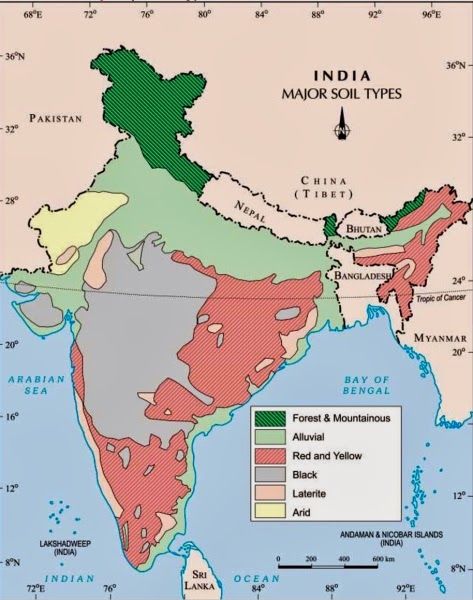
Red and Yellow Soil of India
✅ General Features
• Develops on crystalline igneous rocks
• Reddish color due to a wide diffusion of iron oxide.
• Looks yellow when it occurs in a hydrated form.
• Fine-grained red and yellow soils are normally fertile, whereas coarse-grained soils in dry upland areas have poor fertility.
✅ Area Covered
• Eastern and southern parts of the Deccan Plateau
• Along the Piedmont zone of the Western Ghat.
• Parts of Odisha and Chhattisgarh.
• Southern parts of the middle Ganga plain.
✅ Composition
• Poor in – Lime, Nitrogen, and Humus, Phosphorous.
• Rich in – Potash.
✅ Suitable Crops
• Cotton, Wheat, Rice, Pulse, Tobacco, millet.
Laterite Soil in India
✅ Common Features
• Derived from the Latin word ‘Later’ means brick.
• Indefinitely durable, develop in areas with high temperature and high rainfall.
• These are the result of intense leaching due to tropical rains.
• With rain, lime, and silica are leached away.
• Due to intensive leaching the laterite soils generally lack fertility.
• Widely used as bricks for building houses.
• Laterite soil is the end-product of weathering.
• It cannot be weathered much further.
• The percentage of laterite soil in India is 2.62%.
✅ Area Covered
• Tamil Nadu
• Andhra Pradesh
• Kerala
✅ Composition
• Rich in Iron oxide, Potash, and aluminum compounds.
• Poor in Organic matter, nitrogen, and phosphate.
✅ Suitable Crops
• Cashew nut, Tea, Coffee, Coconut, Rubber, Cinchona, Cotton, Wheat, Rice, Pulse, Tobacco, millet.
Forest and Mountain Soil in India
✅ Common features
• Total area covered – 2.85 lakh sq. km (8.67%)
• The soil formed in the forest area regions where sufficient rainfall is available.
• They are loamy and silty on valley sides.
• And coarse-grained in the upper slopes.
• The soils found in the lower valleys are fertile.
✅ Area Covered
• Mainly found on the hill slopes of Jammu & Kashmir, Himachal Pradesh, Uttarakhand, Karnataka, and Tamil Nadu.
✅ Composition
• Rich in – Humus
• Poor in – Potash, Phosphorus, and Lime.
✅ Suitable Crops
• Tea, Coffee, Spices, and Tropical fruits in Karnataka, Tamil Nadu, and Kerala.
Arid and Desert Soils in India
✅ Common Features
• Total area covered 4.32% (1.42 lakh sq km.)
• Red to brown in color.
• Generally sandy in structure.
• Saline in nature.
• Due to the dry climate, high temperature, and accelerated evaporation, they lack moisture and humus.
• They occur in arid and semi-arid regions and waterlogged and swampy areas.
✅ Area Covered
• Rajasthan
• Gujarat (Rann of Kutch)
• Adjoining areas of Punjab and Haryana lie between the Indus and Aravalis.
✅ Composition
• Poor in – Humus, Nitrogen
• Rich in – Calcium salts and Phosphate
✅ Suitable Crops
• Barley, Rape, Cotton, Wheat, Millets, Maize, and Pulses.
Saline and Alkaline Soil in India
✅ Common Features
• Known as Usara soils.
• Do not support any vegetative growth.
• They have high salt content due to dry climate and poor drainage.
• Known by different names such as – Reh, Kallar, Usar, Thur, Rakar, Karl, and Chopan.
~Note~ • Excessive irrigation with dry climatic conditions promotes capillary action, which results in the deposition of salt on the top layer of the soil. In such areas, especially in Punjab and Haryana, farmers are advised to add gypsum to solve the problem of salinity in the soil.
✅ Area Covered
• Andhra Pradesh, Telangana, and Karnataka.
• Drier parts of Bihar, Uttar Pradesh, Haryana, Punjab, Rajasthan, and Maharashtra.
✅ Composition
• Rich in – Sodium, Potassium, Magnesium
• Poor in – Nitrogen and calcium
✅ Suitable Crops
• Salt-tolerant annual crops are barley and oat.
• Grain sorghum, sugar beets, Bermuda grass, tall wheat grass.
Peaty and Marshy Soils of India
✅ Common Features
• Peaty soils originate in areas of heavy rainfall and high humidity.
• Supports good growth of plants
• Huge quantities of dead organic matter are present in this soil.
• This offers rich humus and organic content to the soil.
• Organic matter up to 40-50 percent.
• Generally heavy and black (Deep Black) in color.
• Peaty soil found in the Kottayam and Alappuzha districts of Kerala known as – Kari.
✅ Area Covered
• Northern part of Bihar.
• Southern part of Uttarakhand.
• Coastal areas of West Bengal, Odisha, and Tamil Nadu.
✅ Composition
• Rich in – Organic Matter.
• Poor in – Potash and Phosphate.
✅ Suitable Crops
• Mostly suitable for Paddy Cultivation.
Soil Erosion
What is Soil Erosion?
▪ Soil erosion is the process of topsoil being removed from the land. Typically, the formation of soil and the erosive forces act in harmony and maintain a balance between the two processes. However, there are instances when this equilibrium is disrupted, causing the removal of soil to occur more rapidly than its formation. As a consequence, soil erosion takes place.
What are the Causes of Soil Erosion?
▪ Both natural and human factors can cause soil erosion. Here are some of the most common causes:
✅ Natural Factors
▪ Rainfall intensity and amount: High-intensity rainfall can cause soil erosion by washing away the topsoil.
▪ Climate change: Climate change can exacerbate soil erosion by increasing the intensity and frequency of extreme weather events such as heavy rainfall and flooding.
▪ Wind: Wind can cause soil erosion by blowing away topsoil and exposing bare soil.
▪ Water bodies: Water bodies, such as rivers and oceans, can cause soil erosion along their banks and shores through wave action and water movement.
▪ Geological factors: Geological factors such as rock type and soil parent material influence soil erosion.
Topography: Steep slopes and hills are more prone to erosion as gravity and water flow easily move soil downhill.
▪ Soil structure: The soil’s structure, including its texture, organic matter content, and drainage capacity, can impact the soil’s resistance to erosion.
▪ Soil composition: The type of soil, such as sand, clay, or loam, can impact the soil’s susceptibility to erosion.
✅ Human Factors
▪ Deforestation: Cutting down trees can lead to soil erosion as the tree roots no longer anchor the soil in place, and the soil is more exposed to the elements.
▪ Agriculture: Intensive farming practices such as tilling, monoculture, and overgrazing can lead to soil erosion as the soil is left exposed and vulnerable to erosion.
▪ Construction: Building roads, buildings, and other infrastructure can cause soil erosion by removing vegetation and disturbing the soil.
▪ Mining: Mining activities can lead to soil erosion by removing vegetation, altering topography, and exposing bare soil.
▪ Poor land management practices: Poor land management practices, such as not using proper erosion control measures or not leaving buffer zones between fields and water bodies, can contribute to soil erosion.
▪ Soil compaction: Soil compaction caused by heavy machinery or excessive foot traffic can reduce the soil’s ability to absorb and retain water, making it more susceptible to erosion.
▪ Improper irrigation: Improper irrigation practices can lead to soil erosion by causing water to run off the land rather than penetrating the soil.
How can we prevent soil erosion?
▪ several effective measures can be taken to prevent soil erosion. Some of the common ways to prevent soil erosion are:
▪ More Plant cover: Planting vegetation, including trees, shrubs, and ground cover, can help reduce soil erosion by anchoring the soil with its roots and intercepting rainwater before it hits the soil surface.
▪ Use of Mulching: Mulching is a soil conservation technique that involves covering the soil with a layer of organic material, such as leaves or straw. This layer protects the soil from erosion and improves soil fertility by providing nutrients as it decomposes. Additionally, mulching helps the soil to dry out more slowly, which can reduce water loss and improve water retention for plants over a longer period of time.
▪ No-till farming: No-till farming involves planting crops without disturbing the soil, which can help reduce erosion by leaving the soil in place and promoting the growth of organic matter.
▪ Contour farming: Farming along the contour of the land can help slow the flow of water and reduce soil erosion by holding water in place.
▪ Terracing: Building terraces, or steps, into steep slopes can help reduce soil erosion by creating a series of level areas that hold water in place.
▪ Soil conservation practices: Practices such as crop rotation, reduced tillage, and crop residue management can help reduce soil erosion and maintain soil health.
▪ Cover crops: Cover crops are crops planted between cash crops to protect the soil from erosion and improve soil fertility.
▪ Soil stabilization measures: Installing soil stabilization measures, such as retaining walls, riprap, or gabion baskets, can help stabilize soil in areas prone to erosion.
Types of Soil of India MCQ (Asked in SSC)
Q1. Watermelons grow best in
A. Alluvial soil
B. Sandy soil
C. Black soil
D. Laterite soil
[SSC Section Officer (Audit) 2008]
Answer –B. Sandy soil
Explanation-
Q2. Generally, the soil of the northern plains of India has been formed by
A. degradation
B. aggradation
C. weathering in situ
D. erosion
[SSC CGL Tier-I 2011, 2005]
Answer –B. aggradation
Explanation-
Q3. The most extensive soil cover of India is comprised of
A. laterite soils
B. black soils
C. alluvial soils
D. marshy soils
[SSC Combined Matric Level (PRE) 2001, 2002]
Answer –C. alluvial soils
Explanation-
Q4. Which of the following states is Laterite soil found?
A. Haryana and Punjab
B. Gujarat and Rajasthan
C. Jammu & Kashmir and Himachal Pradesh
D. Karnataka and Tamil Nadu
[SSC Combined Matric Level 2002]
Answer –D. Karnataka and Tamil Nadu
Explanation-
Q5. To which group does the black cotton soil of India belong?
A. Laterite
B. Podzol
C. Chernozem
D. Alluvial
[SSC Combined Matric Level 2006]
Answer –C. Chernozem
Explanation-
Q6. Saline and alkaline soils in India are also called as
A. Kallar
B. Khadar
C. Regur
D. Bangar
[SSC (10+2) Level Data Entry Operator & LDC 2012]
Answer –A. Kallar
Explanation-
Q7. In which one of the following States is laterite soil found?
A. Kerala
B. Uttar Pradesh
C. Rajasthan
D. Maharashtra
[SSC CAPFs SI, CISF ASI & Delhi Police SI 2015]
Answer –A. Kerala
Explanation-
Q8. In which of the following states can you find pink (laterite) soil?
A. West Bengal and Andhra Pradesh
B. Gujarat and Madhya Pradesh
C. Karnataka
D. Himachal Pradesh and Uttaranchal
[SSC CPO Exam. 2016]
Answer –A. West Bengal and Andhra Pradesh
Explanation-
Q9. Red soil is normally found in India. In which regions is it found?
A. Eastern Region only
B. Southern Region only
C. Eastern & Southern parts of the Deccan Plateau
D. None of these
[SSC CHSL (10+2) Tier-I (CBE) 2016]
Answer –C. Eastern & Southern parts of the Deccan Plateau
Explanation-
Q10. Which of the following soils is rich in Kerala soil?
A. Alluvial Soil
B. Laterite Soil
C. Sandy Soil
D. Loamy Soil
[SSC CGL Tier-I (CBE) 2016]
Answer –B. Laterite Soil
Explanation-
Different Types of Soil Chart
| Soil Name | Location | Rich in | Deficient In |
|---|---|---|---|
| Alluvial Soil | Indo-Gangetic Plain, River Valleys | Potash | Nitrogen |
| Black Soil | Deccan Plateau [Maharashtra, Madhya Pradesh, Telangana, Andhra Pradesh, Gujarat, Parts of Tamil Nadu] | Lime, iron, magnesia and alumina. potash | Phosphorous, nitrogen and organic matter |
| Red and Yellow Soil | Tamil Nadu, Parts of Karnataka, West Bengal (Bankura, Birbhum) | Iron Oxide | Nitrogen, Phosphorous, and Humus. |
| Laterite soils | Karnataka, Kerala, Tamil Nadu, Madhya Pradesh, | Iron Oxide, Potash | Organic matter, Nitrogen, Phosphate and Calcium |
| Forest and Mountain Soils | Forest area of Tamil Nadu, Kerala Jammu & Kashmir, Himachal Pradesh Uttarakhand | Humus | Potash, Phosphorus, Lime |
| Arid and Desert Soil | Rajasthan and adjoining areas of Punjab and Haryana Rann of Kutch | Soluble Slats, Alkaline, Calcium Carbonate | Organic Matter |
| Saline Soil | Gujarat, Uttar Pradesh Maharashtra, West Bengal and Rajasthan | Salt of Calcium, Magnesium sulfurous acid and Sodium | Humus, Nitrogen |
Tips for preparing for questions on soil types in competitive exams
Here are some key areas in this topic that are important for every competitive exam. Most questions on this topic are asked from these key areas.
- Percentage of soil groups (to arrange soils by availability)
- Composition of soils (rich and poor in minerals)
- Nicknames of major soil groups (e.g., regur soil, also known as black soil)
- Nicknames of specific soil groups (e.g., reh, kallar, and usar, all nicknames for saline and alkaline soils)
- Specific characteristics of soil groups (e.g., laterite soil is the end product of weathering and cannot be weathered further)
- Specific agricultural products associated with particular soils (e.g., cotton grown well in black soil)
Conclusion
This overview of the different types of soil in India is essential for anyone preparing for competitive exams related to Indian geography. By understanding each soil type’s characteristics, distribution, and agricultural significance, you will be better equipped to answer questions on this topic in your exams.
Frequently Asked Questions on Types of Soil in India
Answer: List of the 8 major soil groups notified by ICAR
• Alluvial soils
• Black soils
• Red soils
• Laterite soils
• Forest and Mountain soils
• Arid and Desert soils
• Saline and Alkaline soils
• Marshy and Peaty soils
Answer: Alluvial soils are mainly found in India. It occupied an area of 45%.
Answer: The Alluvia soil is the largest soil group in India.
Answer: Alluvial soil is best due to its high fertility. It contains enough organic matter like Humus, which supports easy plant growth.
Answer: Alluvial Soil
Answer: As per ICAR the major types of soil in India are” Alluvial soils, Black soils, Red soils, Laterite soils, Forest and Mountain soils, Arid and Desert soils, Saline and Alkaline soils, and Marshy and Peaty soils”.
Answer: The Deccan plateau is mostly covered by Black or regur soil. Some part of the southern part of the Deccan plateau is covered by red soil. This red soil covers Almost all of the Tamil Nadu area. The Black soil is suitable for the cultivation of Cotton.
Answer: Two Types of Alluvial soil are found in India. These are Khaddar and Bhangar. Khaddar is the new alluvium soil formed by the deposition of fine silts and Bhangar is the old alluvial soil formed away from the floodplains.
Answer: Laterite soil is found in the southern part of the Deccan plateau, in places like Kerala, Tami Nadu, and Andhra Pradesh. The Laterite soil is suitable for the cultivation of cashew nuts.
Answer: Pedology is the subject that deals with the study of soil.

